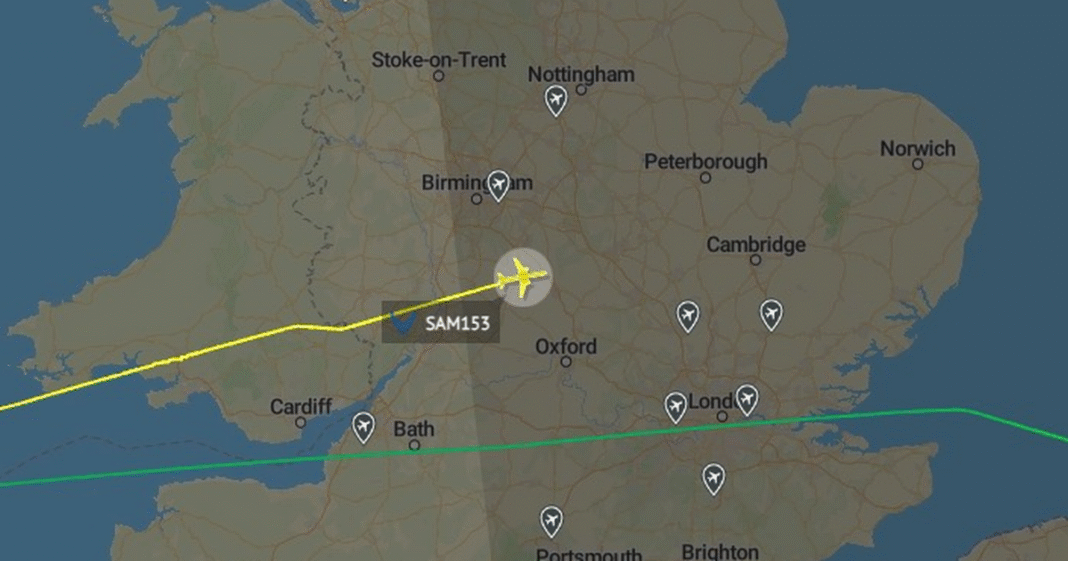A US Air Force aircraft transporting US Secretary of War Pete Hegseth was compelled to redirect to the UK due to an in-flight emergency. Approximately 30 minutes after departing from Brussels en route to Washington, the Boeing C-32A aircraft activated a “7700 squawk code” on its transponder, indicating a general emergency situation onboard. The plane encountered a pressurization issue while flying off the south-west coast of Ireland, resulting in a descent to 10,000 feet and a return eastward, as reported by aviation news network Airlive, which monitored the flight on AirNav Radar.
The decision to descend was prompted by the detection of a crack in the aircraft’s windshield, confirmed later by Pentagon spokesperson Sean Parnell. Parnell stated, “Secretary of War Hegseth’s plane had to make an unplanned landing in the United Kingdom on its way back from NATO’s Defense Ministers meeting due to a cracked windshield. The landing was executed following standard procedures, and everyone onboard, including Secretary Hegseth, is unharmed.”
Hegseth responded to Parnell’s statement by quote-tweeting, “All good. Thank God. Continue mission!” The aircraft was redirected to RAF Mildenhall, a US Air Force installation in Suffolk.
The defense secretary participated in NATO discussions regarding Ukraine’s security at the headquarters, emphasizing the influx of “firepower” to the war-torn nation through the procurement of US weaponry by allies.
Ukraine is advocating for the acquisition of American-made Tomahawk missiles, with President Donald Trump hinting at the possibility of supplying them to increase pressure on Russia to cease the conflict. While Hegseth did not explicitly mention Tomahawks, he emphasized the forthcoming “firepower” and highlighted that the financial commitments made by European nations would soon translate into capabilities for Ukraine.
These weapon procurements fall under the new Prioritised Ukraine Requirements List (PURL), with $2 billion already pledged for military equipment for Ukraine, and additional funding anticipated from NATO member countries.

